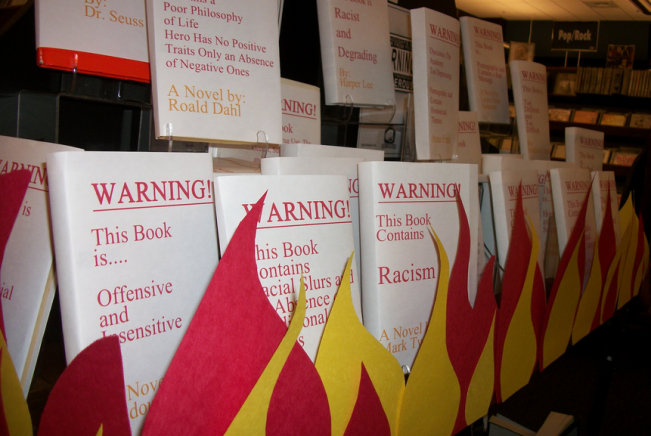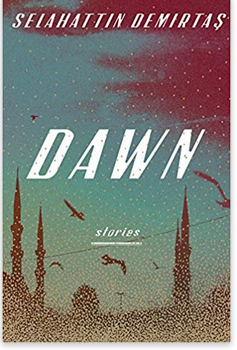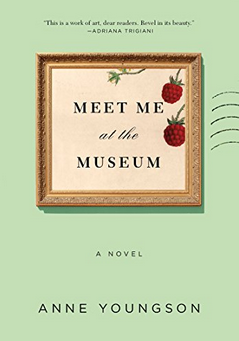Interested in a fable which promotes “the power of kindness, generosity, compassion, and community”? George Saunders, author, and Lane Smith, illustrator, have teamed up to give readers, old and young, a fable for our times: The Very Persistent Gappers of Frip.
Now, this Dollar Tree find fits the bill for those looking for a little encouragement in a world too often dark and full of grief and bad news. I must admit, too, The Very Persistent Gappers of Frip, 84 pages, is the first Saunders’ book I have read all the way through even though I own copies of his short stories, Tenth of December, and his novel, Lincoln at the Bardo.
Frip is a seaside village; only three families live there: the Romos, the Ronsens, and Capable, a little girl, and her father. Frip’s economy is totally reliant upon goats, their milk and cheese, for its survival. As we know, agricultural communities thrive and decline with the farmers’ success or failure.
The problem the Romos, the Ronsens, and Capable and her father face with their goat economy lies in the persistent gappers, nasty, round, little orange beasts which move by wriggling on their bellies—which, to me, sounds very snake-like except that gappers are round.
The gappers love goats and if left undeterred, the gappers will cause the goats to fall over and stop producing milk. Thus, the town would be left bereft. Every day, the children, Capable, Gilbert and Robert Romo and Beverly and Gloria Ronsen must snag the gappers by brushing them off the goats and into their gapper bags. Then the children empty the bags of gappers into the sea.
The children return to their homes, falling into bed exhausted, and the gappers sink to the bottom of the sea only to wriggle their way back to the shore where they infest the goats once more. Then one of the gappers who has a slightly larger brain than the others declares that they would have less distance to cover if they all converged at Capable’s home because it is closer to the shore than the other two houses.
Thus, all the gappers then infest Capable’s goats, much to her dismay. The Romos and the Ronsens, however, are delighted that they are now safe from gappers. In fact, Bea Romos hires strong men to move her home to the edge of her property closer to the Ronsens’ home and further from Capable’s home. Below, a goat is covered with gappers.

Readers can quickly see where this story is headed. Capable is exhausted all of the time trying to protect her goats so that she and her father can survive. After trying all she can and without success, Capable writes letters to the Romos and the Ronsens asking for their help. Both families tell Capable that she must work harder so she can be safe the way they are. They do not acknowledge that the distance from their homes to the shore is the difference in their good luck and Capable’s bad luck.
In the picture on the left, Capable tries to protect her goats by covering them. On the right, readers see what happens when gappers overwhelm the goats: they fall down and stop giving milk.
In desperation, Capable devises a new plan. Her father is reluctant to go along with her plan because it involves CHANGE! He likes things to stay the same. Still, Capable persists and makes a big change in their lives. Her big change also results in the gappers re-infesting the goats which belong to the Romos and the Ronsens. Now, who is not working hard enough?
Read The Very Persistent Gappers of Frip in order to learn about Capable’s solution to her problem and how she treats the Romos and the Ronsens despite their unkindness to her and her father.
George Saunders graduated from college with a degree in exploration geophysics from the Colorado School of Mines. So how did he become a best-selling writer? While working in Sumatra, he filled his suitcase with books so he could read during his two weeks off work. He worked four weeks and then was off two weeks. After working for a year and a half in the oil fields, he returned home and worked at a number of menial jobs until he read an article in People Magazine which profiled writers Jay McInernry and Raymond Carver. In that article, Saunders learned about an MFA program, so he applied to Syracuse and began studying with Tobias Wolff and Douglas Unger. Saunders maintains a Web site at this link: http://www.georgesaundersbooks.com/home.

Illustrator Lane Smith received a Caldecott Honor award in 2012 for Grandpa Green. Two of my favorite books by Smith include Math Curse and The True Story of the 3 Little Pigs. See more of Smith’s art work and more about him at his Web site: http://www.lanesmithbooks.com/LaneSmithBooks/Lane_Smith_Books.html.





































